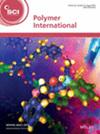求助PDF
{"title":"Enhanced mechanical energy-harvesting performance of eggshell-derived hydroxyapatite/polyurethane piezocomposites through mixture design approach: a promising route for advanced dielectric materials","authors":"Tanzeel Munawar, Nadia Akram, Khalid Mahmood Zia, Muhammad Saeed","doi":"10.1002/pi.6761","DOIUrl":null,"url":null,"abstract":"<p>Piezocomposites provide lightweight, flexible and scalable technologies for efficiently converting mechanical energy into electrical energy. For sustainable energy production, we examined a low-cost, biobased alternative to convert mechanical energy into piezoelectric energy. Hydroxyapatite (HA) having a particle size of 53.26 nm made from chicken eggshell waste was combined with polyurethane (PU) to produce piezoelectric composites. <i>In situ</i> polymerization was performed using aliphatic isocyanates, isophorone diisocyanate, poly(propylene glycol) and 1,4-butanediol. The piezoelectric properties of six different composite films with varying HA concentrations (0–25%) were optimized using a statistical mixture design approach. Fourier transform infrared spectroscopy, thermogravimetric analysis, X-ray diffraction analysis, dynamic mechanical analysis and scanning electron microscopy were utilized for physicochemical characterization. As the HA concentration was increased, the mechanical properties were enhanced, as a uniform dispersion of HA was observed within the PU matrix. An oscilloscope displayed an output voltage of 17.46 V at 16 Hz, with 3 N force applied to a 25% HA composite film. The dielectric constant, dielectric loss and resistivity are frequency functions, and impedance analysis showed low-frequency values with high dielectric properties. The present study has indicated that PU/HA biocomposites are cost-effective and lightweight and can be used in piezoelectric devices in biomedical and wearable electronics. © 2025 Society of Chemical Industry.</p>","PeriodicalId":20404,"journal":{"name":"Polymer International","volume":"74 8","pages":"710-726"},"PeriodicalIF":3.6000,"publicationDate":"2025-04-02","publicationTypes":"Journal Article","fieldsOfStudy":null,"isOpenAccess":false,"openAccessPdf":"","citationCount":"0","resultStr":null,"platform":"Semanticscholar","paperid":null,"PeriodicalName":"Polymer International","FirstCategoryId":"92","ListUrlMain":"https://scijournals.onlinelibrary.wiley.com/doi/10.1002/pi.6761","RegionNum":4,"RegionCategory":"化学","ArticlePicture":[],"TitleCN":null,"AbstractTextCN":null,"PMCID":null,"EPubDate":"","PubModel":"","JCR":"Q2","JCRName":"POLYMER SCIENCE","Score":null,"Total":0}
引用次数: 0
引用
批量引用
Abstract
Piezocomposites provide lightweight, flexible and scalable technologies for efficiently converting mechanical energy into electrical energy. For sustainable energy production, we examined a low-cost, biobased alternative to convert mechanical energy into piezoelectric energy. Hydroxyapatite (HA) having a particle size of 53.26 nm made from chicken eggshell waste was combined with polyurethane (PU) to produce piezoelectric composites. In situ polymerization was performed using aliphatic isocyanates, isophorone diisocyanate, poly(propylene glycol) and 1,4-butanediol. The piezoelectric properties of six different composite films with varying HA concentrations (0–25%) were optimized using a statistical mixture design approach. Fourier transform infrared spectroscopy, thermogravimetric analysis, X-ray diffraction analysis, dynamic mechanical analysis and scanning electron microscopy were utilized for physicochemical characterization. As the HA concentration was increased, the mechanical properties were enhanced, as a uniform dispersion of HA was observed within the PU matrix. An oscilloscope displayed an output voltage of 17.46 V at 16 Hz, with 3 N force applied to a 25% HA composite film. The dielectric constant, dielectric loss and resistivity are frequency functions, and impedance analysis showed low-frequency values with high dielectric properties. The present study has indicated that PU/HA biocomposites are cost-effective and lightweight and can be used in piezoelectric devices in biomedical and wearable electronics. © 2025 Society of Chemical Industry.
通过混合设计方法增强蛋壳衍生羟基磷灰石/聚氨酯压电复合材料的机械能量收集性能:先进介电材料的一条有前途的途径
压电复合材料为有效地将机械能转化为电能提供了轻便、灵活和可扩展的技术。为了实现可持续能源生产,我们研究了一种低成本的生物基替代能源,将机械能转化为压电能。以鸡蛋壳废料为原料制备粒径为53.26 nm的羟基磷灰石(HA)与聚氨酯(PU)复合制备压电复合材料。用脂肪族异氰酸酯、异佛尔酮二异氰酸酯、聚丙二醇和1,4-丁二醇进行原位聚合。采用统计混合设计方法对6种不同HA浓度(0-25%)的复合薄膜的压电性能进行了优化。利用傅里叶变换红外光谱、热重分析、x射线衍射分析、动态力学分析和扫描电镜对其进行了理化表征。随着HA浓度的增加,其力学性能得到增强,因为在PU基体中观察到HA的均匀分散。示波器在16 Hz下显示17.46 V的输出电压,施加3n的力到25% HA的复合薄膜上。介电常数、介电损耗和电阻率均为频率函数,阻抗分析显示低频值具有较高的介电性能。目前的研究表明,PU/HA生物复合材料具有成本效益和重量轻,可用于生物医学和可穿戴电子产品的压电器件。©2025化学工业协会。
本文章由计算机程序翻译,如有差异,请以英文原文为准。





 求助内容:
求助内容: 应助结果提醒方式:
应助结果提醒方式:


